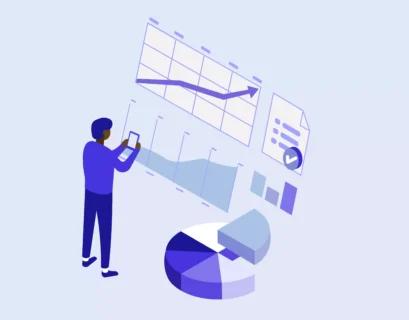Get ready for another enlightening article from “Currency Veda,” providing valuable insights and knowledge about currency trading.
Welcome to the exciting world of currency trading! If you’ve ever wondered about the possibility of earning profits by trading currencies from the comfort of your own home, then you’re in the right place.
This comprehensive blog serves as your gateway to the fundamentals of currency trading, designed specifically for new traders seeking knowledge and guidance. Whether you’re a curious individual exploring new financial avenues or a seasoned investor looking to diversify your portfolio, this blog will equip you with the essential information and strategies needed to navigate the dynamic and ever-evolving world of forex trading.
So, fasten your seatbelts and prepare to embark on an exhilarating journey that could potentially unlock countless opportunities in the global currency markets.
Let’s dive into Currency Trading 101: A Comprehensive Overview for New Traders.
An Introduction to Currency Trading: What You Need to Know
Currency trading, also known as forex trading, involves the buying and selling of currencies with the aim of profiting from fluctuations in their exchange rates. It is a decentralized global market where individuals, institutions, and governments trade currencies 24 hours a day, five days a week.
Understanding the basics of currency trading is essential for aspiring traders, as it provides a foundation for navigating this dynamic and potentially lucrative market.
Consider a scenario where a trader believes that the Indian Rupee will weaken against the US Dollar (USD) due to changing economic conditions. In this case, the trader may decide to sell INR and buy USD.
If their prediction proves accurate and the value of the Indian Rupee indeed decreases relative to the US Dollar, they can then sell their USD back for INR at a more favorable exchange rate, resulting in a profit.
For instance, let us assume the exchange rate between INR and USD is 1 USD = 75 INR. If the trader initially sells 10,000 INR, they would receive approximately 133.33 USD.
After some time, the value of the Indian Rupee weakens, causing the exchange rate to shift to 1 USD = 80 INR. At this point, if the trader converts their 133.33 USD back to INR, they would receive approximately 10,666.67 INR. Consequently, the trader would have made a profit of 666.67 INR by capitalizing on the weakening of the Indian Rupee against the US Dollar.
It’s important to note that currency trading involves risks, and exchange rates are influenced by various factors such as economic indicators, political events, and market sentiment.
Therefore, traders need to conduct thorough analysis, stay updated with relevant news, and implement appropriate risk management strategies to make informed trading decisions.
By utilizing examples such as the INR, traders can better understand how currency trading operates and how they can potentially profit from fluctuations in exchange rates.
The Currency Market Demystified: How It Works and Who Participates
As said, the currency market, also known as the foreign exchange market or forex market, is a decentralized global market where currencies are traded. It operates 24 hours a day, five days a week, and is the largest financial market in the world, with trillions of dollars traded daily.
Understanding how the currency market works and who participates in it is crucial for anyone interested in currency trading.
Imagine a scenario where a multinational corporation based in the United States needs to pay its suppliers in India for raw materials. To do so, they must convert their US Dollars (USD) into Indian Rupees (INR) to complete the transaction. The corporation would engage in currency trading by selling USD and buying INR in the currency market.
On the other side of the transaction, an exporter in India receives payment from a foreign buyer in USD. To access their funds in their local currency, they would need to convert the received USD into INR. They would participate in the currency market by selling USD and buying INR.
In both cases, the currency market acts as a platform that facilitates the exchange of currencies, allowing businesses to conduct international trade and manage foreign exchange transactions efficiently.
In addition to corporations, individual traders also participate in currency trading in the currency market. For example, an individual investor residing in India may decide to convert their savings in INR into USD to diversify their portfolio. They would engage in currency trading by selling INR and buying USD in the currency market.
Likewise, retail traders from other countries may participate in currency trading involving the Indian Rupee (INR). They can speculate on the movement of the INR against other currencies, such as the USD or Euro (EUR), to potentially profit from exchange rate fluctuations.
By including the Indian Rupee (INR) as an example, we can see how participants in the currency market, whether corporations or individual traders, engage in currency trading to facilitate international transactions, manage risks, and seize investment opportunities.
Key Players in Currency Trading: Understanding Banks, Institutions, and Retail Traders
In the world of currency trading, there are three key players: banks, financial institutions, and retail traders. Banks, including central banks, play a vital role in currency trading as they provide liquidity, set interest rates, and implement monetary policies.
Financial institutions such as hedge funds, investment banks, and multinational corporations also actively participate in currency trading to manage risks and generate profits. Retail traders, on the other hand, are individual traders who access the currency market through online platforms and brokers.
Their presence has grown significantly in recent years, offering opportunities for individuals to engage in currency trading and capitalize on exchange rate movements. Understanding the roles and interactions among these key players is essential for comprehending the dynamics of the currency market.
Essential Terminology: Common Forex Terms Every Trader Should Know
To thrive in the currency trading realm, it is crucial for traders to grasp the essential terminology used in forex. Familiarity with these terms enhances communication and comprehension within the market.
For instance, the “exchange rate” signifies the value of one currency, such as the Indian Rupee (INR), relative to another, like the US Dollar (USD). “Pip” refers to the smallest price increment in a currency pair, such as INR/USD, while “bid” and “ask” prices denote the buying and selling rates respectively.
Traders in India might utilize “leverage” to control larger positions with a modest amount of capital when trading INR against other currencies. Additionally, understanding “stop-loss” and “take-profit” levels enables Indian traders to set predetermined exit points to manage risk and secure profits.
By acquainting themselves with these fundamental forex terms, traders can navigate the currency market with confidence and make well-informed decisions involving the Indian Rupee.
Fundamental Analysis: Evaluating Economic Factors and their Impact on Currency Prices
Fundamental analysis is a crucial aspect of currency trading, involving the evaluation of economic factors and their influence on currency prices. By examining economic indicators, geopolitical events, and central bank policies, traders gain insights into the underlying strength or weakness of a currency.
Economic factors such as interest rates, inflation, GDP growth, employment data, and trade balances are closely scrutinized to assess the overall health of a country’s economy.
For instance, if a country experiences robust economic growth, low inflation, and rising interest rates, it may attract foreign investors seeking higher returns. This increased demand for the currency can lead to an appreciation in its value. Conversely, if a country faces economic challenges, high inflation, or political instability, it may lead to a depreciation of its currency.
Traders often monitor news releases, economic calendars, and government reports to stay informed about key economic data and events that can impact currency prices. By anticipating the market’s reaction to such information, traders can make informed decisions and position themselves accordingly.
Fundamental analysis goes beyond short-term price fluctuations and aims to understand the broader economic trends that shape currency movements. It provides traders with a fundamental framework for assessing currency valuations and making long-term trading decisions.
While fundamental analysis is a valuable tool, it is important to combine it with other forms of analysis, such as technical analysis and market sentiment, to form a comprehensive trading strategy. By incorporating fundamental analysis into their trading approach, traders can enhance their understanding of the currency market and potentially identify lucrative trading opportunities.
Choosing the Right Currency Pairs: Factors to Consider
When it comes to currency trading, choosing the right currency pairs is a crucial decision that can greatly impact a trader’s success. Several factors should be considered in this selection process. One such factor is the level of liquidity. Liquidity refers to the ease with which a currency pair can be bought or sold without significantly affecting its price. Popular currency pairs like the Indian Rupee (INR)/US Dollar (USD) tend to have high liquidity, allowing for smooth trading execution.
Another consideration is volatility, which refers to the magnitude of price fluctuations. Traders seeking more significant opportunities may prefer currency pairs that exhibit higher volatility. For instance, the INR/USD pair might experience increased volatility during major economic announcements or geopolitical events affecting India or the United States.
Furthermore, it is essential to evaluate the correlation between currency pairs. Positive correlation means that two currencies tend to move in the same direction, while negative correlation implies, they move in opposite directions. For instance, the INR/USD and INR/EUR pairs might exhibit a negative correlation, meaning that when one strengthens against the Indian Rupee, the other weakens.
Considering these factors and conducting thorough analysis can help traders identify currency pairs that align with their trading strategies and objectives. By selecting the right currency pairs, such as the INR/USD, traders can capitalize on market opportunities and navigate the currency market more effectively.
Developing a Trading Plan: Setting Goals, Identifying Entry and Exit Points
Developing a comprehensive trading plan is crucial for currency traders, as it provides structure and discipline in navigating the dynamic currency market. A trading plan encompasses various elements, including setting clear goals, identifying entry and exit points, and managing risk effectively.
Setting goals is essential to establish a sense of direction and purpose in trading. Traders may set goals such as achieving a specific return on investment, increasing trading consistency, or mastering a particular strategy. By defining clear goals, traders can align their efforts and make informed decisions regarding the Indian Rupee (INR) or other currency pairs.
Identifying entry and exit points is another vital component of a trading plan. Traders can employ technical analysis tools and indicators to identify potential buy or sell opportunities based on price patterns, trends, or support and resistance levels. For instance, a trader analyzing the INR/USD pair may wait for a specific breakout level or a reversal pattern before entering or exiting a trade.
Risk management is an integral part of any trading plan. Traders should define their risk tolerance, set appropriate stop-loss and take-profit levels, and determine position sizing based on their account size and risk-reward ratio. By managing risk effectively, traders can protect their capital and minimize potential losses.
A well-developed trading plan serves as a roadmap, guiding traders through the complexities of currency trading. It provides a structured approach, helping traders stay focused, disciplined, and consistent in their decision-making processes, whether they are trading the Indian Rupee or any other currency pair.
Bottom Line
In conclusion, this comprehensive overview of currency trading provides new traders with a solid foundation. Armed with this knowledge, new traders can confidently embark on their currency trading journey, equipped with the essential understanding needed to navigate the exciting and potentially profitable world of forex.
For further guidance and support, visit CurrencyVeda, where you can find expert resources, tools, and a supportive community to enhance your currency trading journey. Start your trading success with CurrencyVeda today!









[…] growing number of countries accepting the Rupee for trade, investment, and settlement purposes reflects its increasing acceptance and […]
[…] are interconnected and can have both short-term and long-term effects on currency exchange rates. Currency traders diligently analyze and monitor these factors to identify potential trends and opportunities in the […]